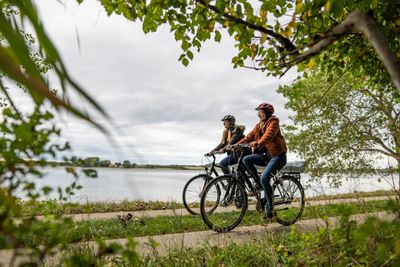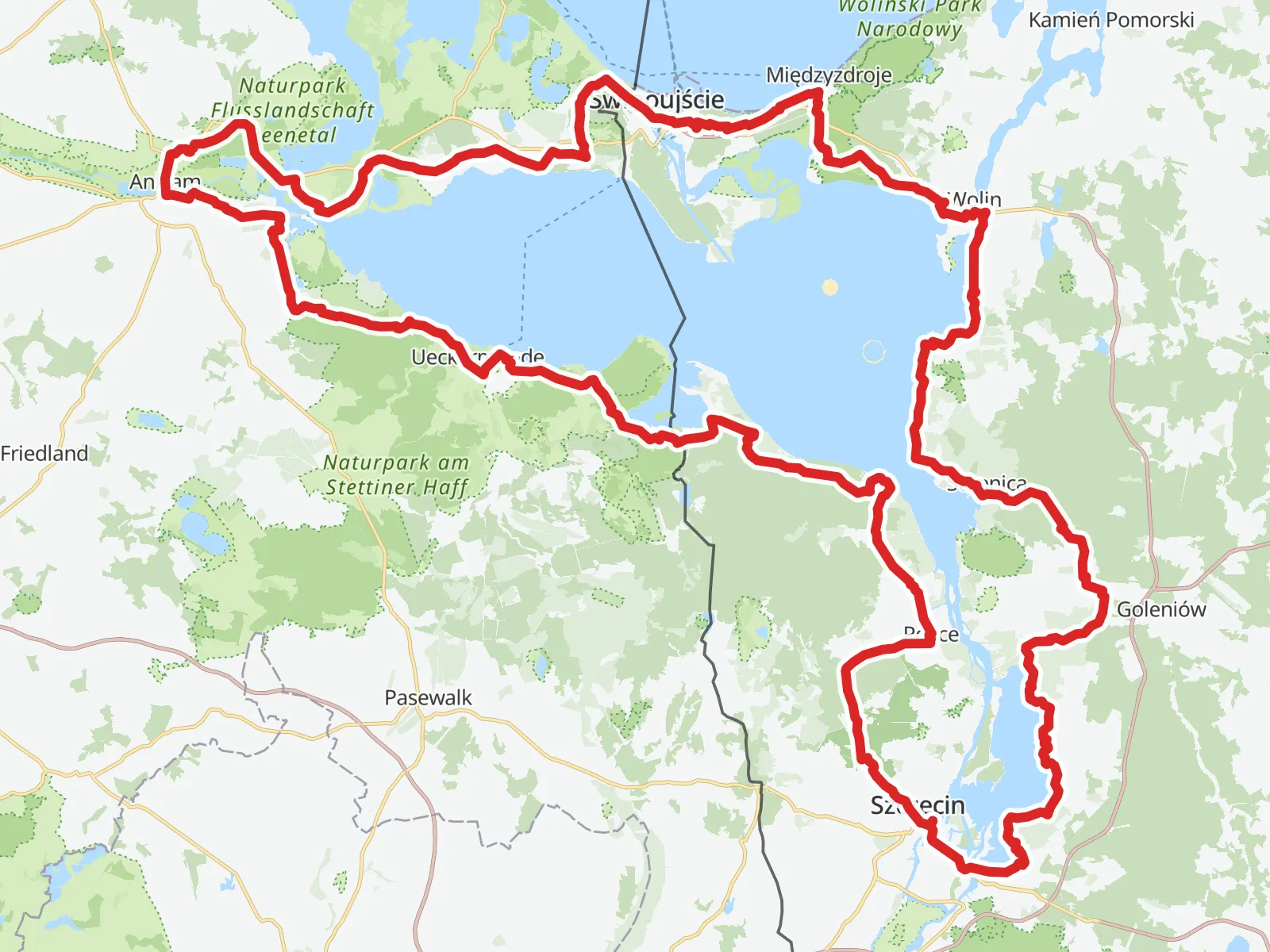Ostseeküsten-Radweg (D2)
The Baltic Sea Cycle Route stretches along Germany's northern coastline, offering cyclists a captivating journey through diverse landscapes from Flensburg near the Danish border to Usedom Island at the Polish frontier. This route forms part of the international EuroVelo 10 network, which aims to encircle the entire Baltic Sea through nine countries.

Unlike the flatter North Sea routes, the Baltic Sea Cycle Route presents surprisingly varied terrain. You'll cycle through charming fishing villages, historic Hanseatic cities with distinctive brick architecture, thatched fishermen's cottages, elegant seaside resorts with impressive piers, and dramatic cliff coastlines. The route regularly ventures inland, allowing you to experience the full breadth of northern Germany's coastal regions.

Essential Route Information
- Difficulty level: Easy to moderate (ADFC classification: easy)
- ADFC certification: 4/5 stars
- Elevation profile: Surprisingly hilly with short, steep climbs, especially when heading inland
- Surface types: Mixed - predominantly asphalt with sections of concrete slabs, paving stones, sand, gravel, and occasional cobblestones
- Route type: Mostly dedicated cycle paths and quiet country roads, minimal exposure to busy traffic
- Recommended direction: Flexible, though westerly winds may favor eastward travel
- Recommended bike: Reliable touring bike essential; not suitable for road bikes on longer sections
Route Marking & Navigation
The Baltic Sea Cycle Route is marked with distinctive blue, green, and yellow symbols from Flensburg to Usedom, though signage quality varies significantly along the route. Some sections feature exemplary waymarking where you can identify your onward route at every junction, while other areas have missing or poorly positioned signs that require extended searching.
Additional maps are essential due to the inconsistent signage. Local green arrow waymarkers on light backgrounds can help orient you between official route signs, ensuring you reach your next destination without major detours.
Best Direction & Season
The maritime climate along the Baltic coast creates more pronounced seasonal variations than inland Germany. The sea's influence brings constant breezes and rapid weather changes that should factor into your planning.
- Peak season: June, July, and August offer the best weather but also the busiest conditions
- Extended season: Late April through early October provides favorable cycling conditions
- Weather considerations: Pack for rapidly changing conditions and stronger coastal winds
Key Attractions Along the Route
The route showcases the rich cultural heritage and natural beauty of Germany's Baltic coastline.
- Hanseatic cities: Lübeck and Stralsund (UNESCO World Heritage sites) with their distinctive brick architecture
- Rügen Island: Germany's largest island featuring dramatic white chalk cliffs and the famous Gespensterwald (Ghost Forest)
- Imperial spas: Historic seaside resorts where German royalty once vacationed
- Fehmarn Island: Complete circuit possible around this Baltic island
- Fischland-Darß-Zingst Peninsula: Nature paradise ideal for birdwatching and wildlife observation
- Heiligendamm: Elegant historic spa resort with classical architecture
- Usedom Island: Imperial seaside resort at the Polish border
Culinary Highlights
The Baltic coast offers exceptional seafood cuisine with strong regional traditions. Fresh fish directly from local fishermen creates the foundation of coastal gastronomy, while each region maintains distinct culinary specialties.
- Fischbrötchen: Fresh fish sandwiches sold directly by fishermen
- Baltic herring: Prepared in numerous regional variations
- Mecklenburg specialties: Regional dishes featuring local ingredients
- Seasonal seafood: Varying catches throughout the cycling season
Accommodation Options
The Baltic coast provides diverse accommodation options catering to different preferences and budgets. The region's tourism infrastructure has developed significantly, offering everything from simple guesthouses to luxury resorts.
- Hotels and pensions: Available in all major towns and tourist centers
- Cyclist-friendly accommodations: Many establishments offer secure bike storage and repair facilities
- Camping sites: Abundant options, particularly appealing for families
- Historic accommodations: Converted buildings in Hanseatic cities and spa resorts
Access & Transportation
Getting There
Flensburg, Lübeck, and Stralsund serve as the primary starting points for Baltic Sea Cycle Route adventures. Flensburg and Lübeck provide access to the western sections, while Stralsund opens the eastern portions and various islands including Rügen. All three cities connect well with public transport and major highways.
Getting Back
The route unfortunately lacks a continuous parallel railway line, though many locations connect inland by train. Ferry services across narrow bays near cities like Kiel, Lübeck, and Rostock can provide scenic shortcuts and serve as tour highlights. These ferries typically accommodate cyclists and have facilitated route flexibility for years.
Practical Considerations
The Baltic Sea Cycle Route presents varied challenges that require preparation and flexibility. Surface quality fluctuates considerably between well-maintained urban sections and more challenging rural stretches involving gravel, sand, or cobblestones. The route's hilly nature, particularly when venturing inland, may surprise cyclists expecting flat coastal riding.
Weather variability demands appropriate clothing for rapidly changing conditions and stronger coastal winds. The maritime climate can shift quickly from pleasant cycling weather to challenging conditions.
- Bike maintenance: Essential due to varied surface conditions and longer distances between services
- Family considerations: Some sections unsuitable for bike trailers; children should be confident cyclists
- Flexibility: Multiple small towns enable adaptable daily distances
Final Tips
The Baltic Sea Cycle Route rewards cyclists with incredible variety, from cultural immersion in historic Hanseatic cities to natural wonder at dramatic cliff formations. The route's diverse landscapes provide constant interest, though the mixed terrain requires appropriate preparation and equipment.
Whether you seek cultural exploration, natural beauty, or family-friendly beach activities, the Baltic coastline delivers memorable experiences. The combination of refreshing sea breezes, fascinating maritime history, and excellent seafood creates ideal conditions for cycling tourism where the relaxed coastal pace enhances the experience.






